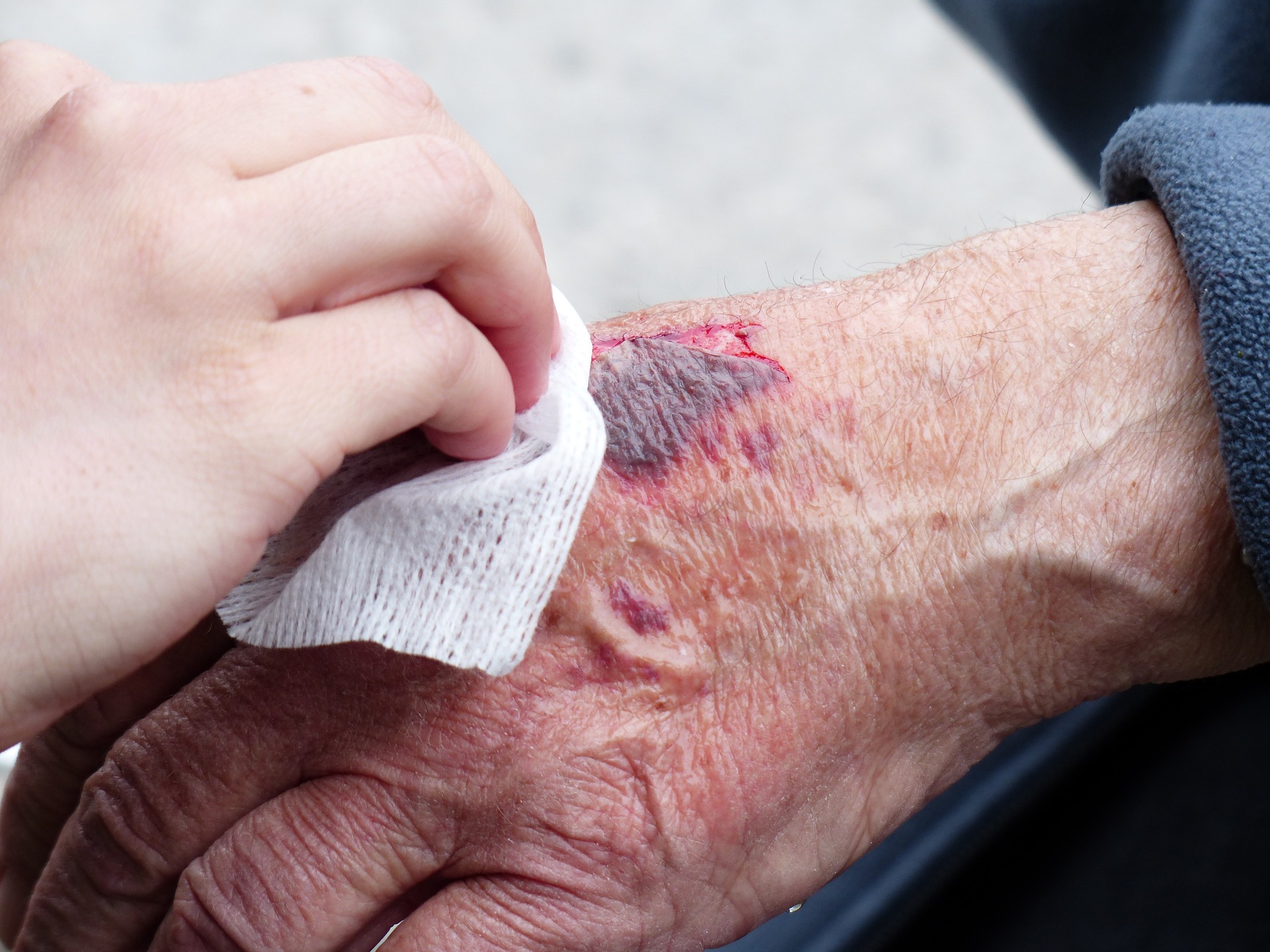Can we help you?
Contact us

Can we help you?
Contact us

Thank you for contacting us
Your form has been submitted successfully Our team will contact you again as soon as possible.
Whooppss...!! An error has occurred
Try sending later or write an email directly to areaempresas@ua.es

INFO
SHEET
DOWNLOAD
EXECUTIVE
ABSTRACT
CONTACT DETAILS: Research Results Transfer Office-OTRI
University of Alicante
Tel.: +34 96 590 99 59
Email: areaempresas@ua.es
http://innoua.ua.es
The Adhesion and Adhesives Laboratory research group has developed a new biomaterial for use as adhesive or tissue sealant applicable to both animals and humans. This invention solves the disadvantages of the adhesives known so far presenting optimal properties such as biocompatibility with living tissues, high adhesive capacity, adaptable to the tissue of the wound being bond, absence of toxicity and tissue regeneration properties.
The group is looking for companies interested in acquiring this technology for commercial exploitation.

Medical and veterinary adhesives and sealants are used in clinics and surgery as an alternative to other wound closure methods such as sutures or staples. In addition, they allow wounds to stop bleeding quickly in accidents and health emergencies, reduce healing time, as well as reduce or completely eliminate the formation of scars.
Much of today's medical and veterinary adhesives are based on synthetic polymers, polymers derived from natural products, or a combination of both.
Synthetic polymer adhesives have significant advantages:
- Low cost.
- Good reproducibility in industrial scaling.
- High mechanical and adhesive properties.
- No risk of disease transmission.
But they also have some disadvantages:
- Limited biocompatibility as they are considered foreign bodies by the inflammatory cells of the surrounding tissues.
- It can generate toxic degradation by-products (tissue necrosis).
- They are relatively rigid, which means premature elimination and the risk of incomplete wound closure.
- Local increase in temperature in surrounding tissues leading to necrosis or death.
Natural polymer adhesives have the following advantages:
- Reduced risk of toxicity.
- More similar mechanical properties to those of bonding tissues.
But they also have disadvantages:
- Limited adhesive properties.
- Relatively fast degradation rate.
- Can generate autoimmune responses.
- If they derive from animals, they may present risks of disease transmission.
To overcome the disadvantages of the adhesives known in the state of the art, this innovation proposes a new biomaterial for use as an adhesive or tissue sealant that has excellent properties such as biocompatibility with living tissues, high adhesive capacity, adaptable to the tissue that is being bond, absence of toxicity and tissue regeneration properties.
The polymeric biomaterial is preferably generated in situ on the wound to be closed, adding simultaneously on it a solution of a dendron and a cyanoacrylate adhesive, so that, in contact with body water or blood, the polymerization reaction of the cyanoacrylate is produced which chemically anchors dendron molecules, forming the corresponding polymeric biomaterial on the wound to be closed or sealed. The polymeric biomaterial hardens (curing process) as the polymerization reaction takes place, leaving a thin layer of it on the wound or tissue.
Dendrons are three-dimensional macromolecules with many regularly ordered branches that have very low polydispersity and a high degree of functionalization (see Figure 1).
The formation of adhesive materials by cyanoacrylate polymerization to form a solid layer is known in the state of the art, but, in the present invention, the inclusion of bifunctional dendrons to cyanoacrylate-based adhesives presents important advantages:
- Increased polymerization rate in contact with a biological environment.
- Reduction of the exothermic reaction during the polymerization process of cyanoacrylates in the presence of water or blood, avoiding risks of tissue death (e.g. necrosis).
- Improvement of the reactivity of the cyanoacrylate monomers by eliminating secondary toxic compounds from their polymerisation that do not normally react with them.
- Increase in the flexibility of the polymerised adhesives, which avoids their premature detachment as time passes since their application.
- It allows aesthetic improvements (i.e. absence of scars) due to better tissue integration and re-sorption of the polymerized adhesive.
- It does not generate toxic by-products.
INNOVATIVE ASPECTS OF TECHNOLOGY
The polymeric biomaterial of the present invention presents rapid curing and cross-linking, moderate heat release during curing within the range that allows its compatibility with living tissues, high adhesive capacity, good flexibility adaptable to the tissue that joins, absence of toxicity and tissue regeneration properties.
This new bioadhesive has successfully passed different physical-chemical tests in the laboratory, but there are still biocompatibility tests to be carried out on living cells of both humans and animals.
The main sectors of application will be the medical and the veterinarian sector, since this invention can be very useful in the treatment and care of wounds, in the closing of wounds by accident, in medical, cosmetic and plastic surgeries, repair of broken nails, etc.
The research group is looking for Biomedical / pharmaceutical companies interested in acquiring this technology for commercial exploitation through model licensing agreements.
This technology is protected by utility model application.
• Title: "Polymeric Biomaterial and its Use".
• Application number: U201931847
• Date of application: 8/11/2019
Medicine and Health
Carretera San Vicente del Raspeig s/n - 03690 San Vicente del Raspeig - Alicante
Tel.: (+34) 965 90 9959




